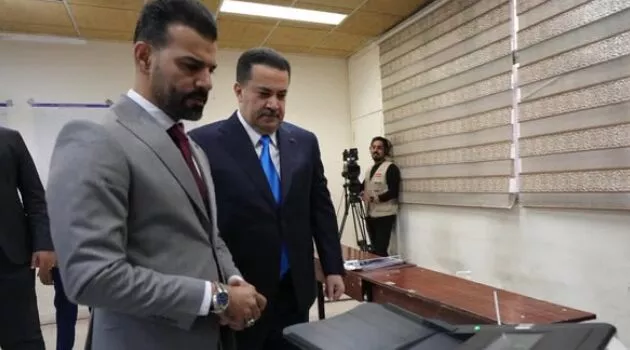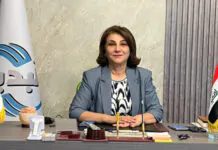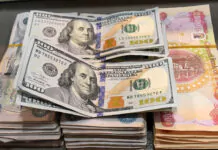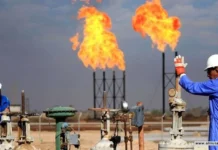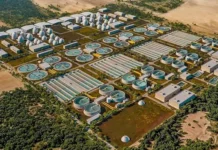At first glance, Iraq’s November 11 election looked promising—especially for its relationship with the United States. Even though Muqtada al-Sadr’s movement boycotted the vote, turnout still rose to 55%, a big jump from the 43% seen in 2021.
But the leading faction, the Reconstruction and Development Coalition led by Prime Minister Mohammed Shia al-Sudani, won only 46 seats out of 329—about 15%. This means Iraq is once again headed for a long and messy political negotiation period before a new government is formed. In past years, this process has taken anywhere from eight to eleven months.
Who Won and Who Didn’t
Sudani was the clear winner. His coalition received 1.3 million votes—around 370,000 more than the Iran-aligned State of Law Alliance. This is a major shift from 2021, when Sudani’s group won just two seats before he became prime minister with help from the pro-Iran Coordination Framework (CF), a bloc dominated by Shia militias.
This time, Sudani campaigned based on his record at home. There was no clear sign of Iranian support, and he focused heavily on showing Iraqis what he accomplished.
Other key results:
- Taqaddum (Sunni Arab party): 28 seats
- Kurdistan Democratic Party (KDP): 26 seats
- Patriotic Union of Kurdistan (PUK): 15 seats
- State of Law (pro-Iran): 27 seats
- al-Sadiqoun (run by Asaib Ahl al-Haq): 27 seats
Even with Sudani’s success, the Iran-friendly Coordination Framework still holds the largest group of seats—almost enough to form a government on its own.
Why Sudani Did Well
At first, many Iraqis assumed Sudani would be fully controlled by Iranian-backed groups and would do little for ordinary people. But over time, he gained real support—especially from Sunni Arab voters, who showed up strongly on election day.
Polls before the election showed 58% of Sunni and Shia Arabs had confidence in him—higher than any other candidate except Sadr, who didn’t participate.
People also gave Sudani credit for improving services and building major infrastructure, especially in Baghdad. The city saw so much construction that The Economist called it a “boomtown.”
He also improved Iraq’s standing in the region:
- He worked with Turkey on security issues involving the PKK.
- Baghdad reopened a key oil pipeline to Turkey.
- Iraq signed a major water agreement with Ankara.
- He pushed for more energy independence from Iran.
- He strengthened ties with Arab neighbors and the United States.
However, Sudani’s critics raise serious concerns. They say:
- He didn’t fight corruption and continued the sectarian system of dividing power for political gain.
- He empowered the militia-run Muhandis General Company, giving them billions of dollars in contracts.
- Money poured into Baghdad while other areas reportedly saw cuts.
- He hired nearly a million new government workers, expanding the budget far beyond its limits.
- His government approved a law lowering the legal marriage age to nine, sparking widespread criticism.
Keeping the Situation Calm
When Sudani took office in 2022—especially after the Gaza war in 2023—Shia militias were frequently attacking U.S. and Israeli targets. After heavy pressure from Washington and warnings from Israel, Sudani pushed these militias to stop, helping keep Iraq out of a wider regional war.
He also resisted demands from some local groups to expel U.S. troops. Instead, he supported a gradual redeployment, allowing a continued American presence.
Iraq’s judiciary also canceled an arrest warrant for former U.S. President Donald Trump over the 2020 killing of Qasem Soleimani. Sudani then refused to sign a new PMF law that would have given militias even more power.
These decisions improved Iraq’s image in Washington and encouraged major U.S. companies—like ExxonMobil, Chevron, and KBR—to invest again after years of hesitation.
What Happens Next
Forming a government in Iraq is complicated. Even though the constitution lays out a clear process, political parties often delay the steps until they finish months of behind-the-scenes bargaining. This tradition violates the rules but continues every election cycle.
Key points of the process:
- Parliament meets and elects a speaker.
- Parliament elects or reappoints a president.
- The president assigns the largest bloc to form a government.
- That bloc picks a prime minister—likely Sudani, but not guaranteed.
- The nominee has 30 days to present a cabinet and win approval.
Iraq also follows an unwritten system where top positions are divided by sect:
- Speaker: Sunni Arab
- President: Kurd
- Prime Minister: Shia Arab
This system, plus intense internal competition among Shia factions, slows things down even more.
Final Thoughts
Even with his strong performance, Sudani still faces major challenges. The Iran-backed Coordination Framework—which helped him rise to power last time—no longer supports him. They control a large share of parliament, including seats held by groups the U.S. labels as terrorist organizations.
The last three years have been relatively stable for Iraq and its relationship with the United States. Sudani balanced between Iran-backed factions and Washington, trying to keep Iraq out of regional conflict.
But if the CF decides to push Iraq back toward Iran’s orbit during the government-formation process, relations with the U.S. could worsen again—much like the tense years of the first Trump administration, when Iraq became a battlefield between Iranian and American interests and foreign companies pulled back.
